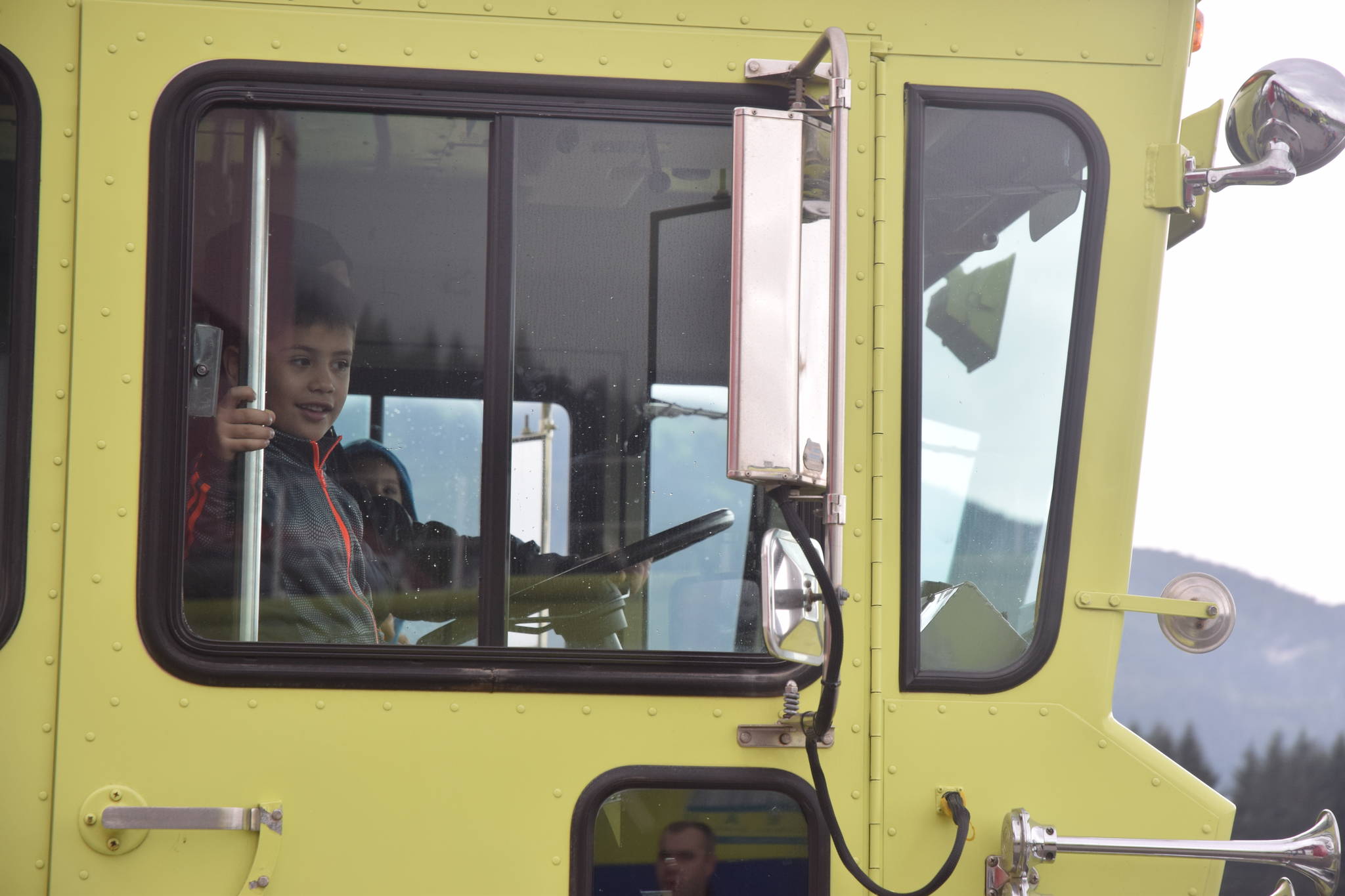Capital City Fire/Rescue celebrated the addition of a new truck and the completion of a remodeled bay at their Juneau International Airport station on Saturday.
The occasion marked the completion of a $2.6-million expansion project funded by the Federal Aviation Administration, the City and Borough of Juneau sales and the state of Alaska.
CCFR staff lead tours of the updated facility, which was expanded 19 feet and remodeled to accommodate the addition of a third Aircraft Rescue and Firefighting (ARFF) vehicle to their fleet of fire trucks. CCFR keeps two specially-trained firemen on staff at the airport station at all times.
Aircraft fires pose specific problems for firemen, Assistant Fire Chief Ed Quinto said.
“An aircraft fire, first of all, you have many people in a small compartment, and lots of diesel fuel that spreads out,” Quinto said. “Large quantity of fuel, large number of people — they (aircraft fires) usually have an impact that’s greater than a car fire.”
The new, $600,000 ARFF is designed and outfitted to fight diesel fires and rescue passengers should a disaster befall a flight taking off or landing at the airport. Resembling a chartreuse Batmobile, the vehicle stands out in the fleet.
The ARFF uses water to fight structure fires, but can also spray foam and special chemicals to combat diesel fires. Mark Fuette, a firefighter and paramedic, is trained in operating the state-of-the-art vehicle.
Fuette can operate the truck’s hoses and various technology from his controls in the driver’s seat. Video monitors and specially-designed mirrors help him see what he’s doing without stepping out. He can also operate the ARFF truck’s controls from doors on either side of the vehicle.
“I can sit and run everything from the inside as well as here,” he said while showing off controls inside the vehicle’s side door. “So if I have guys running stuff here and I have to hop out and help do something, I can turn everything on from here.”
Aircraft fire response is particularly quick work, even by firefighting standards. The FAA requires the first truck to arrive at the disaster site within three minutes, Fuette said.
The FAA increased the airport’s index status this year because of the size of planes landing in Juneau and the number of people coming through the airport, Quinto said. The station’s upgrades helped CCFR comply with their new index status.
Airport manager Patty Wahto said the project was paid for by just under 94 percent FAA funds, with the remainder coming from CBJ and state sources.
• Contact reporter Kevin Gullufsen at 523-2228 or kevin.gullufsen@juneauempire.com.

